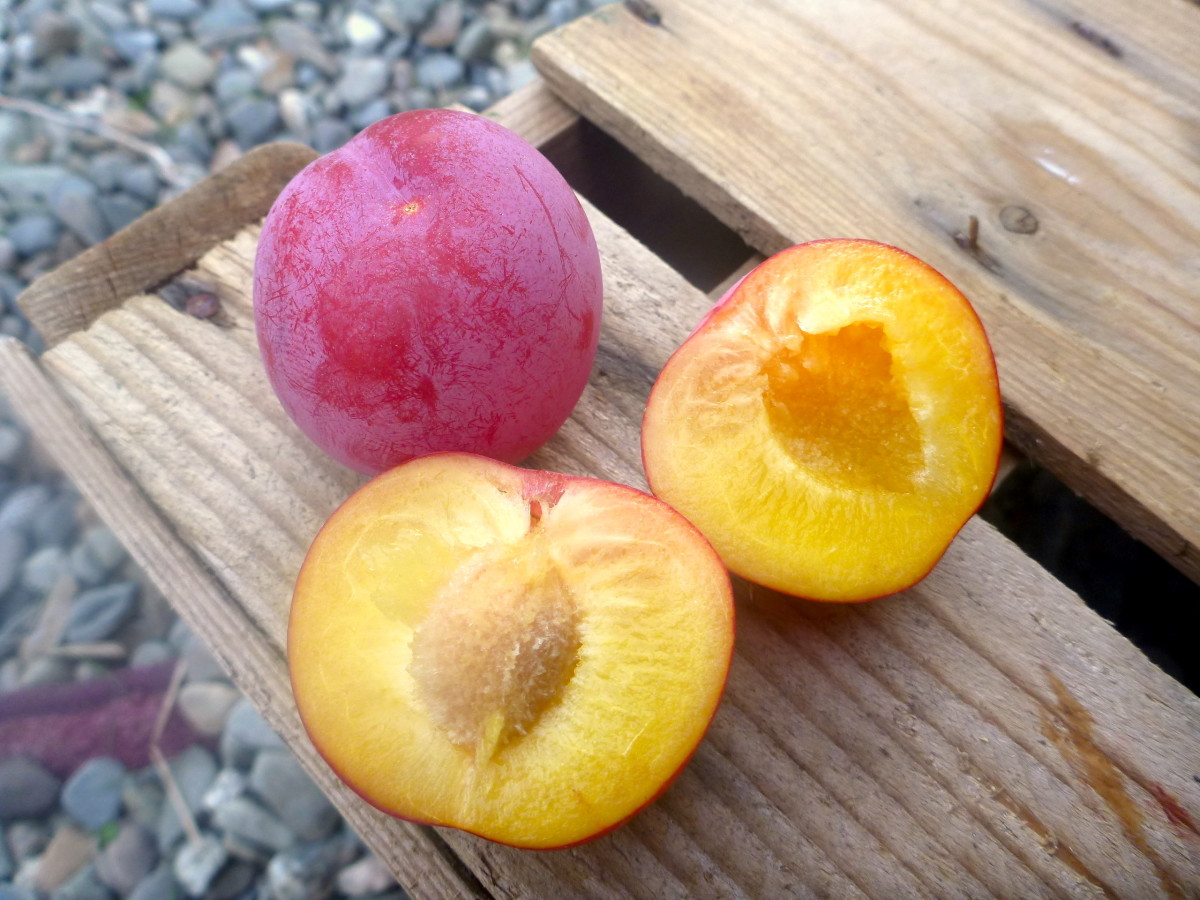Late summer.
(Prunus americana × Prunus simonii) NE Hansen intro, SD Exp Stn, 1911.
Rosy red fruit, up to 1½" in diameter, mottled with darker purplish-red and covered with a faint bloom. Grower Don Johnson’s comment: “Talk about flavor: candy plum.” Sweet, distinctive, meaty and flavorful. Not real juicy. Somewhat freestone.
Extremely vigorous tree blooms heavily every year. Diligent pruning may be required to keep it from becoming a bit of a monster.
Considered a great pollinator for other hybrid plums because of its long bloom period. Z3. Indigenous Royalties. (3–6' bare-root trees)
Maine Grown. Indigenous Royalties.





